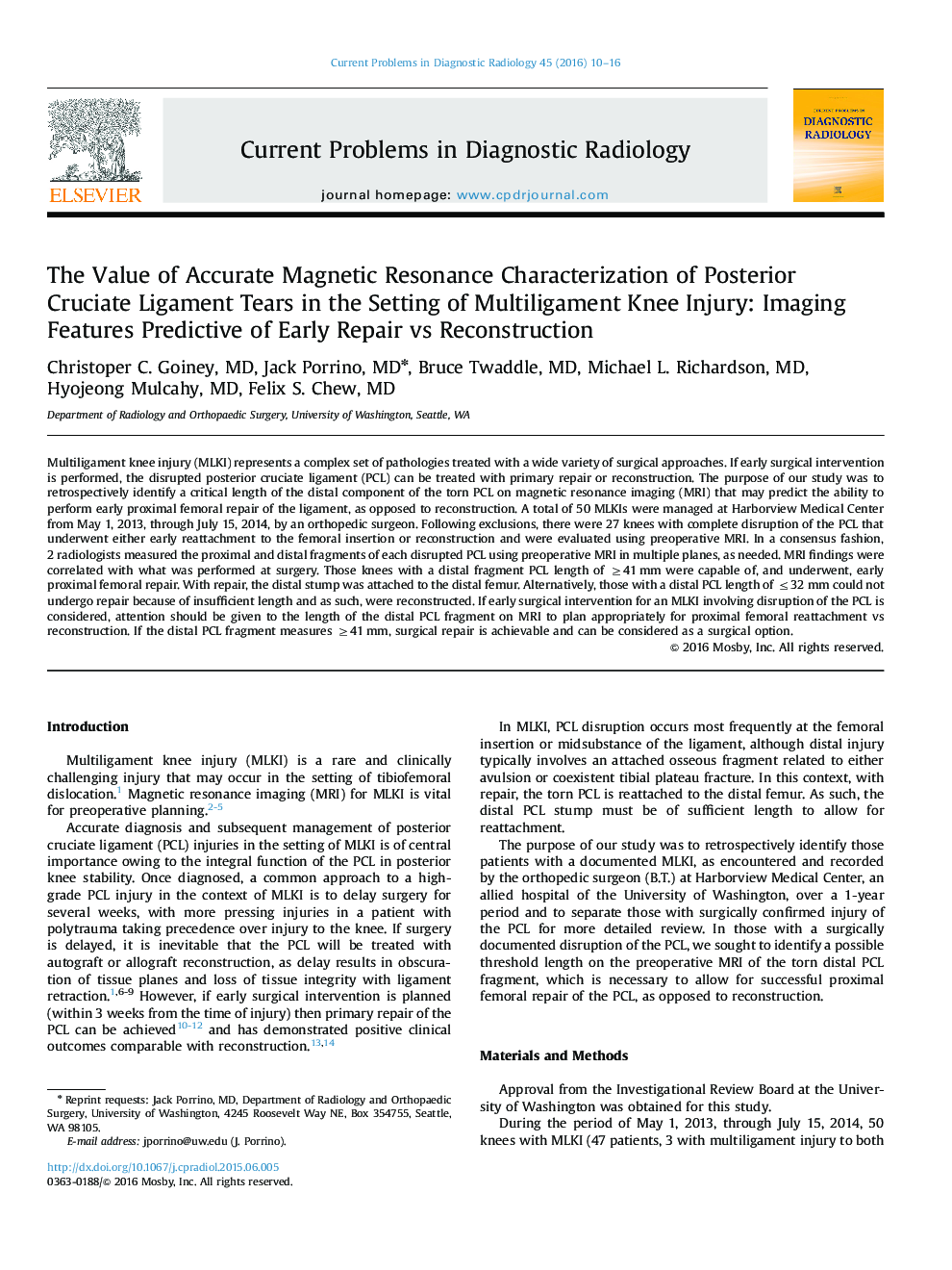| Article ID | Journal | Published Year | Pages | File Type |
|---|---|---|---|---|
| 4223444 | Current Problems in Diagnostic Radiology | 2016 | 7 Pages |
Multiligament knee injury (MLKI) represents a complex set of pathologies treated with a wide variety of surgical approaches. If early surgical intervention is performed, the disrupted posterior cruciate ligament (PCL) can be treated with primary repair or reconstruction. The purpose of our study was to retrospectively identify a critical length of the distal component of the torn PCL on magnetic resonance imaging (MRI) that may predict the ability to perform early proximal femoral repair of the ligament, as opposed to reconstruction. A total of 50 MLKIs were managed at Harborview Medical Center from May 1, 2013, through July 15, 2014, by an orthopedic surgeon. Following exclusions, there were 27 knees with complete disruption of the PCL that underwent either early reattachment to the femoral insertion or reconstruction and were evaluated using preoperative MRI. In a consensus fashion, 2 radiologists measured the proximal and distal fragments of each disrupted PCL using preoperative MRI in multiple planes, as needed. MRI findings were correlated with what was performed at surgery. Those knees with a distal fragment PCL length of ≥41 mm were capable of, and underwent, early proximal femoral repair. With repair, the distal stump was attached to the distal femur. Alternatively, those with a distal PCL length of ≤32 mm could not undergo repair because of insufficient length and as such, were reconstructed. If early surgical intervention for an MLKI involving disruption of the PCL is considered, attention should be given to the length of the distal PCL fragment on MRI to plan appropriately for proximal femoral reattachment vs reconstruction. If the distal PCL fragment measures ≥41 mm, surgical repair is achievable and can be considered as a surgical option.
